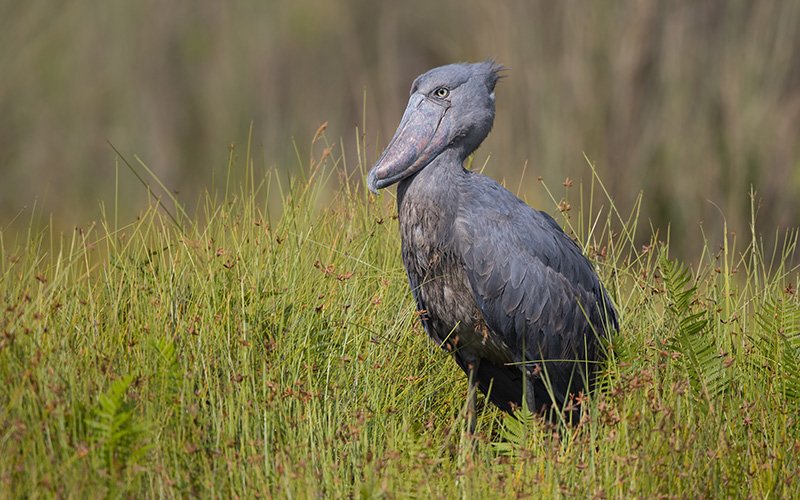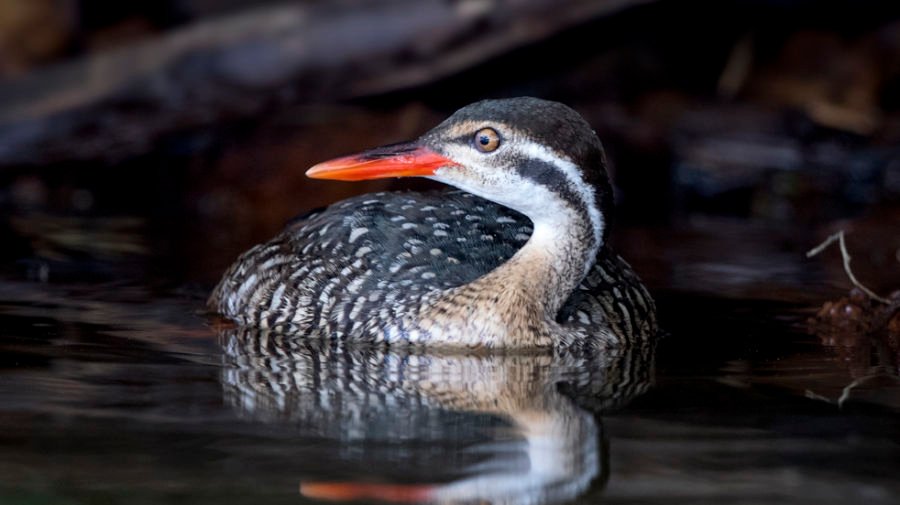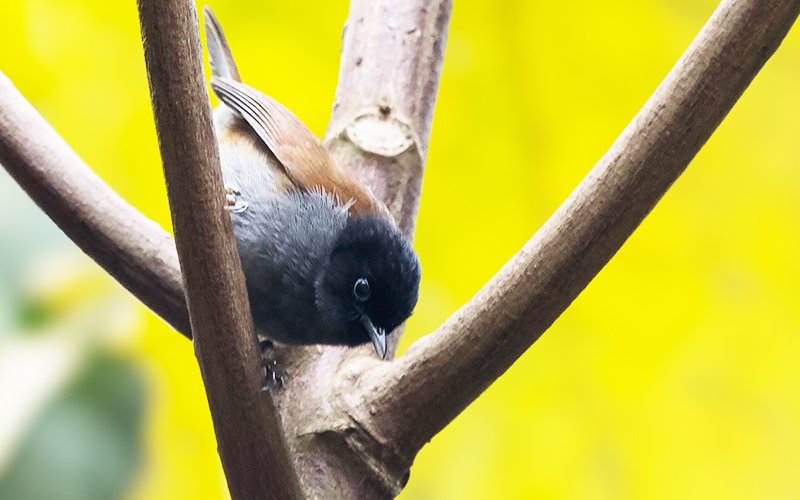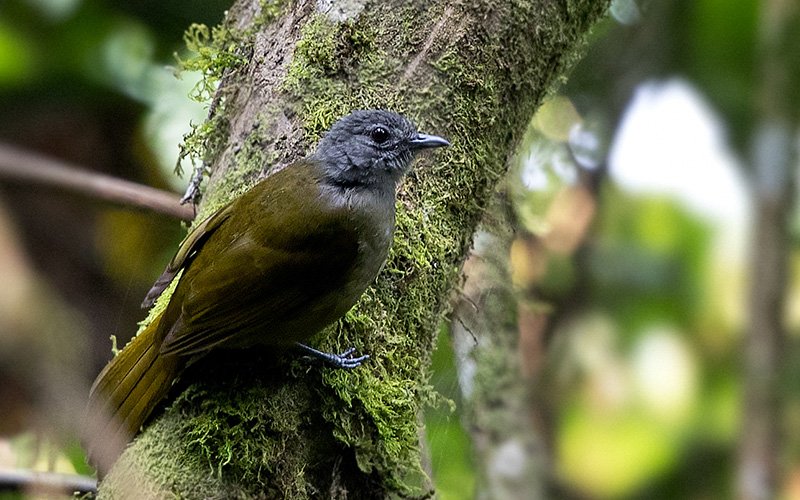Do not hesitage to give us a call. We are an expert team and we are happy to talk to you.
+256 772 339 494
harriertours@gmail.com
Immerse yourself in the captivating world of birds and primates on our exclusive 16 day birding and primate tour of Uganda. Harrier Tours will take you on an unforgettable journey through the diverse landscapes and rich biodiversity of this remarkable destination.
16 Days
From Entebbe International Airport
This is a 16 Day Birding and Primate tour of Uganda that covers most of the key forest birding locations
Wetland birds, Savanna birds, Albertine Rift endemics and Semuliki Ituri forest specials. Other expectations include Gorilla and Chimpanzee tracking
Arrival and Hotel Transfer Upon your arrival at Entebbe Airport, immerse yourself in seamless hospitality as we escort you to your luxurious accommodation, ensuring a tranquil start to your adventure. For those arriving early, enjoy a leisurely day exploring the Entebbe Botanical Gardens and the adjacent Entebbe Zoo. Encounter a variety of weavers, warblers, and migratory birds amidst lush greenery, with the chance to spot elusive green bulls in the dense forest patches of the zoo.

Begin your adventure bright and early after a delightful breakfast. Lake Mburo National Park offers an unparalleled opportunity to discover an array of southern savannah species, making it a must-visit destination in Uganda.

Of particular interest are sightings of the Red-faced Barbet, Tabora Cisticola, African Finfoot, and White-backed Night Heron, which thrive within the park’s diverse ecosystem. As you traverse through the park, immerse yourself in the breathtaking scenery dominated by towering grass savannahs punctuated by majestic Acacia and Euphorbia trees.
Keep your eyes peeled for the vibrant inhabitants of this remarkable habitat, including the Crested Francolin, Emerald- sported wood Dove, Brown Parrot , Bare-faced Go away bird, Blue napped Mousebird , Lilac-breasted Roller, Green wood hoopoe, Common Scimitarbill ,African Grey Hornbill, Sport Flanked, White Headed and double toothed Barbets, Nubian and cardinal Woodpeckers, Trilling Cisticola,Yellow breasted Apalis, Northern blackTit, Chin-spot Batis, Greater Blue Eared Starling , Marico Sunbird, Black headed Gonolek, Brown backed and white browed scrub Robin, Rufous Chested Swallow, Black Bellied Bustard, African Wattled Plover,Rufous Napped and Flapped Lark, Coqui francolin, Yellow-throated Long claw and southern Red Bishop, migratory brown Chested Plovers can be seen from the second week of July to December.
As dusk descends upon the savannah, embark on a thrilling nocturnal exploration, seeking out elusive nocturnal species such as the Black shouldered Nightjar , Swamp and Pennant winged Nightjars, Verreaux`s Eagle owl, African Scops Owl.
Let the allure of Lake Mburo National Park captivate your senses as you uncover the secrets of its vibrant avian community.
Uncover the mesmerising allure of Ruhija’s renowned Mubwindi Swamp, an oasis teeming with rare and indigenous species. Immerse yourself in the verdant forests as you hunt for elusive treasures, from the captivating Handsome Francolin to the exquisite Mountain Masked Apalis. Nature will spellbind you as it reveals its magnificent spectacle, unveiling the mysteries of this vibrant haven.

Prepare for an unforgettable highlight of our 16-day birding itinerary as we venture into Ruhija to discover the famed Mubwindi Swamp. Here, you’ll encounter an extraordinary array of species, including the elusive Handsome Francolin, Mountain Masked Apalis, Red-faced Woodland Warbler, Ruwenzori Apalis, Cherry-throated Apalis, White-breasted Crombec, Ruwenzori Hill Babbler, Scally-throated Honey Guide, Mountain Sooty Boubou, Doherty`s Bushrike, Mountain Illadopsis, Red-throated Alethe, Black-headed Alethe, Shelly`s Crimsonwing, Dusky Crimsonwing, Dusky Twinspot, Grauer`s Warbler, Dwarf Honey Guide, White-started Robin, white-tailed-blue flycatcher, Mountain Thrush, Mountain Oriole,Great Blue and Black-billed Turacos, Yellow-billed and grey-chase barbets, Waller`s Starling, Narina Trogon, White-headed Wood Hoopoe, African Green Broadbill, Ruwenzori Batis, Archer`s Robin, Evergreen Forest Warbler, Stripe-breasted Tit, Chubb`s Cisticola, Banded Prinia, Oriole Finch, Mountain and yellow-striped greenbulls, barred long-tailed cuckoos, streaky seed eaters, Brown Necked Parrot, Slender Billed Starling, Olive Pigeons, Mountain Buzzard, White Naped Raven, African Crowned Eagle, Regal Sunbird, Purple Breasted Sunbird, Blue Headed Sunbird, Northern Bouble couloured Sunbird and Variable Sunbird, Grey Cuckoo Shrike, Western green Tinker bird, Strange weaver and Black Billed weaver, Mountain Yellow Warbler, yellow whiskered green bul. White-eyed slaty flycatcher, Nocturnal species that are likely to be seen include Ruwnzori nightjars and African wood owls.
The Neck, a slender divide between Bwindi Impenetrable National Park’s Ruhija and Buhoma sectors, beckons with its verdant riverine forest canopy. Here, amidst this lush landscape, you’ll encounter a diverse array of avian delights.

Keep your eyes peeled for the elusive Cassin’s Grey Flycatcher, African black duck, Mountain wagtail, kakamega, and red-tailed greenbulls, Toro olive, little grey, white-toothed, slender-billed, and Cameroon sombre greenbulls, yellow-spotted, hairy-breasted, yellow-billed, and grey-toothed barbets, olive long-tailed, dusky-long-tailed, and African Emerald cuckoos, black-billed and brown-capped weavers, dusky tit, grey-headed and Northern double-coloured, olive, and green sunbird, dusky blue and African dusky flycatchers, African shrike flycatcher, grey and buff-toothed and black-toothed apalises, red-headed Malimbe, red-tailed bristlebil,narrow-tailed, purple-headed, and Stuhllmann`s starlings, tambourine dove and Western bronze-naped igeon, It is also the best place in Uganda to find the black bee-eater.
Booking with Harrier Tours is simple! You can either book directly through our website or get in touch with our friendly team via email or phone to discuss your preferences and customize your itinerary.
At Harrier Tours, we pride ourselves on our intimate knowledge of the local terrain, personalized experiences, and passionate guides who ensure every moment of your journey is unforgettable.
We offer comfortable and well-appointed accommodations ranging from boutique lodges to eco-friendly camps, ensuring a restful retreat after each day of exploration.
Our tour is suitable for birding enthusiasts of all levels, from beginners to experienced birdwatchers. Our expert guides provide informative insights and cater to varying levels of expertise.
Our cancellation policy varies depending on the timing of your cancellation and other factors. Please refer to our terms and conditions or contact our team for detailed information on our cancellation policy.
